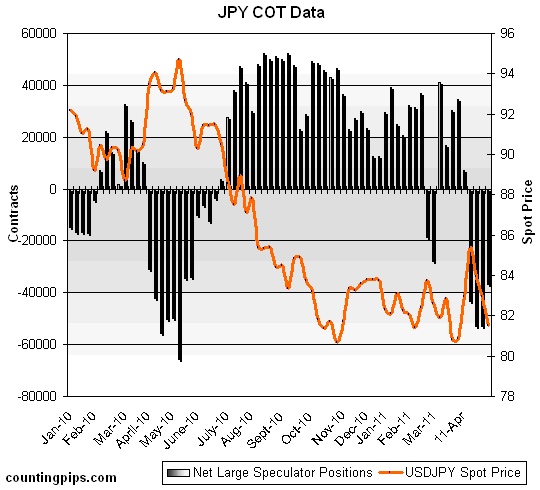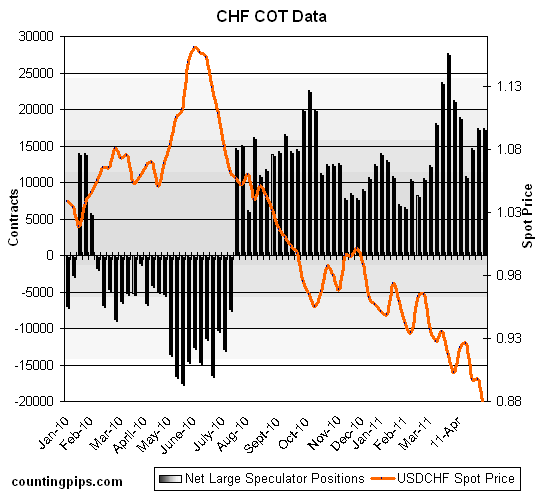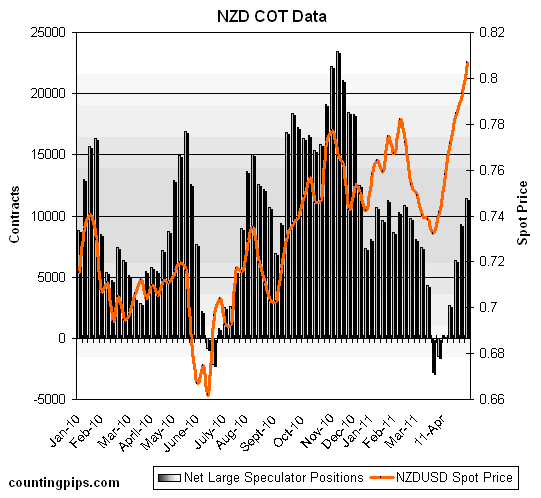Source: ForexYard
With Europe and Great Britain on holiday Monday, currency traders have witnessed a relatively thin trading environment. Though debt concerns loom in the euro zone, and industrial production falters globally, the higher yielding assets like the GBP and EUR appear positioned to gain despite poor fundamentals. This trend appears to have little opposition as dollar traders shift substantial value into other assets.
Economic News
USD – USD Traders Weighing Momentum at Start of NFP Week
The US dollar has continued to plummet since Friday as dollar bears continued to move out of the greenback in exchange for higher yielding currencies. The Fed’s record low interest rates will persist for the foreseeable future, according to the FOMC report and subsequent statement last week, and the dollar is expected to see little support this week as a result.
The EUR/USD rose to a three-year high, reaching towards 1.4900 in Friday’s session. The AUD/USD witnessed a similar bull run, climbing to a 29-year high of 1.0920. The USD/JPY joined the chorus, despite weak fundamentals in Japan, and fell to 81.52 from 82.17 yesterday.
Today, with most of Europe on holiday for Labor Day, the US economy will be one of the few major global economies releasing data sets on Monday. The most impactful figure being published will be the Institute for Supply Management’s (ISM) Manufacturing PMI, a leading indicator of manufacturing production.
As industry appears to be faltering these past few weeks, this number may get released somewhat below expectations, driving more investors away from the USD. With Non-Farm Payrolls (NFP) this Friday, the week should be exciting for forex traders.
EUR – Euro Begins Week Mildly Bullish Despite Thin Labor Day Trading
The euro has been a top performer against the US dollar following last week’s announcement by the US Federal Open Market Committee (FOMC) that US interest rates would remain at their record lows. The EUR began the middle of last week strongly bullish and has since tapered off mildly, but still maintains its momentum; albeit weakly.
With Europe and Great Britain on holiday Monday, currency traders have witnessed a relatively thin trading environment. Though debt concerns loom in the euro zone, and industrial production falters globally, the higher yielding assets like the GBP and EUR appear positioned to gain despite poor fundamentals. This trend appears to have little opposition as dollar traders shift substantial value into other assets.
As for Monday, the euro looks to be gaining against the greenback as traders are largely absent from the region to shift investments, but global traders are still bullish on Europe as the USD remains in freefall. Switzerland will publish its retail sales data today, along with the euro zone’s final manufacturing PMI. These factors, however, will likely be outweighed by the shift in sentiment towards the buck after last week’s FOMC statement. Look for long positions on the EUR to continue through this week.
JPY – Japan Celebrates Golden Week, Thin Trading Expected
The USD/JPY has been trading lower recently as investors flee the greenback on the coattails of the Fed’s monetary policy statements. After reaching upwards of 82.75 on Tuesday, the pair quickly dropped to a daily low of 81.61 Wednesday, and dipped farther in Thursday’s sessions after the Bank of Japan (BOJ) decided to hold rates steady and maintain present levels in its Asset Purchasing Program.
While the yen suffers from its own economic concerns, shifts in consumer sentiment have helped lift yen values against a number of its rivals. The pair also looks to be continuing this movement for the foreseeable future given the massive shift away from the US dollar. With Japan celebrating Golden Week since last Friday, liquidity throughout the region will be somewhat depressed. The JPY could gain from this absence as the rest of global traders shift towards Europe.
Oil – Oil Prices Supported by Declining USD
Oil prices ended Friday slightly higher on the day as traders largely moved away from the US dollar, lifting commodity values. As investors bailed out of their long positions with the USD, oil prices found support, pushing the commodity back towards $113 a barrel with an opening price of $112.86 today.
As for today, crude oil traders may want to consider that commodities, which are linked to the value of the US dollar, are likely going to continue receiving a boost in the immediate future due to recent monetary policy statements out of the US. Hawkish statements about economic growth may suffice to hold prices stable between $112 and $115, but many speculators are beginning to anticipate another bull run in commodity prices.
Technical News
EUR/USD
The pair has come off from last week’s high at 1.4880 to form a bullish flag pattern. A breach above the consolidation pattern would target 1.5070, just below the 2009 high of 1.5140. Support comes in today at 1.4755 followed by 1.4650 and a retracement target on the hourly chart at 1.4430.
GBP/USD
After completing a textbook retracement lower to the previous trend line off of the 2007 high, the pair reached a 17-month high and looks to continue to rise. Both monthly and weekly stochastics are rising, indicating further potential gains in the pair. Initial resistance comes in at last week’s high of 1.6745, followed by 1.6880, with a target at the 2009 high at 1.7040. Support comes in at 1.6625, followed by 1.6600 and 1.6430.
USD/JPY
The sharp downtrend continues for the USD/JPY as the pair touched a low this morning at 81.00. This is encroaching on the 80 yen line in the sand, potentially drawing the ire of the Ministry of Finance and a possible new round of intervention in the FX markets. Support is located at the post-intervention low at 80.70, followed by the pre-intervention low at 76.40. Resistance is found at 82.80.
USD/CHF
The pair closed the month near a new all-time low and the Swiss franc has been one of the strongest performing currencies this past month. A 14-year trend line comes in at 0.8510 and may prove to be supportive. A breach below this level would take out a significant number of stops. A bounce higher at this level could take the pair higher near 0.8900.
The Wild Card
Silver
Silver prices collapsed this morning as traders took profits after the commodity reached a new high near $50. The price decline to $42.50 comes close to the short term trend line off of the January low which comes in this week at $41.20. Forex traders may be able to buy the commodity on a rebound. Support is found at the $38 level.
Forex Market Analysis provided by ForexYard.
© 2006 by FxYard Ltd
Disclaimer: Trading Foreign Exchange carries a high level of risk and may not be suitable for all investors. There is a possibility that you could sustain a loss of all of your investment and therefore you should not invest money that you cannot afford to lose. You should be aware of all the risks associated with Foreign Exchange trading.








